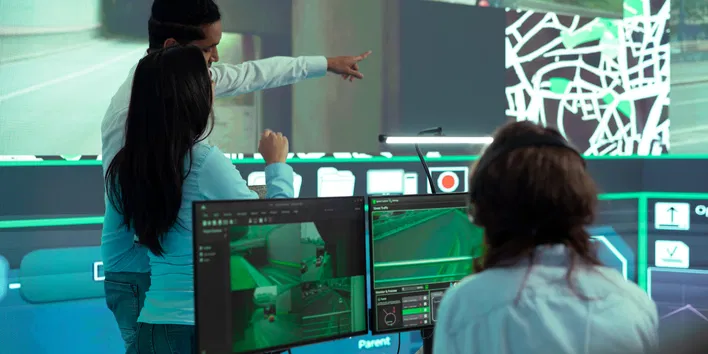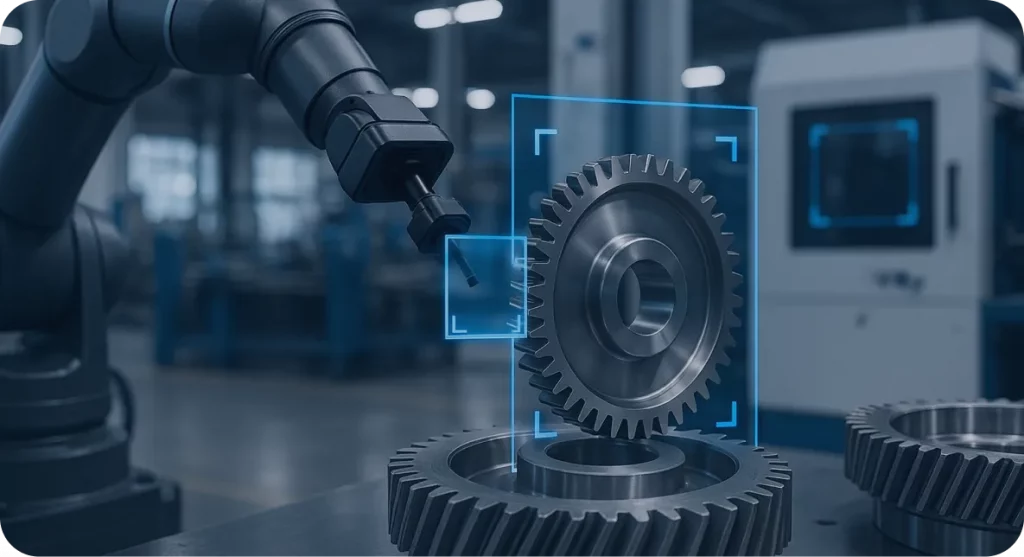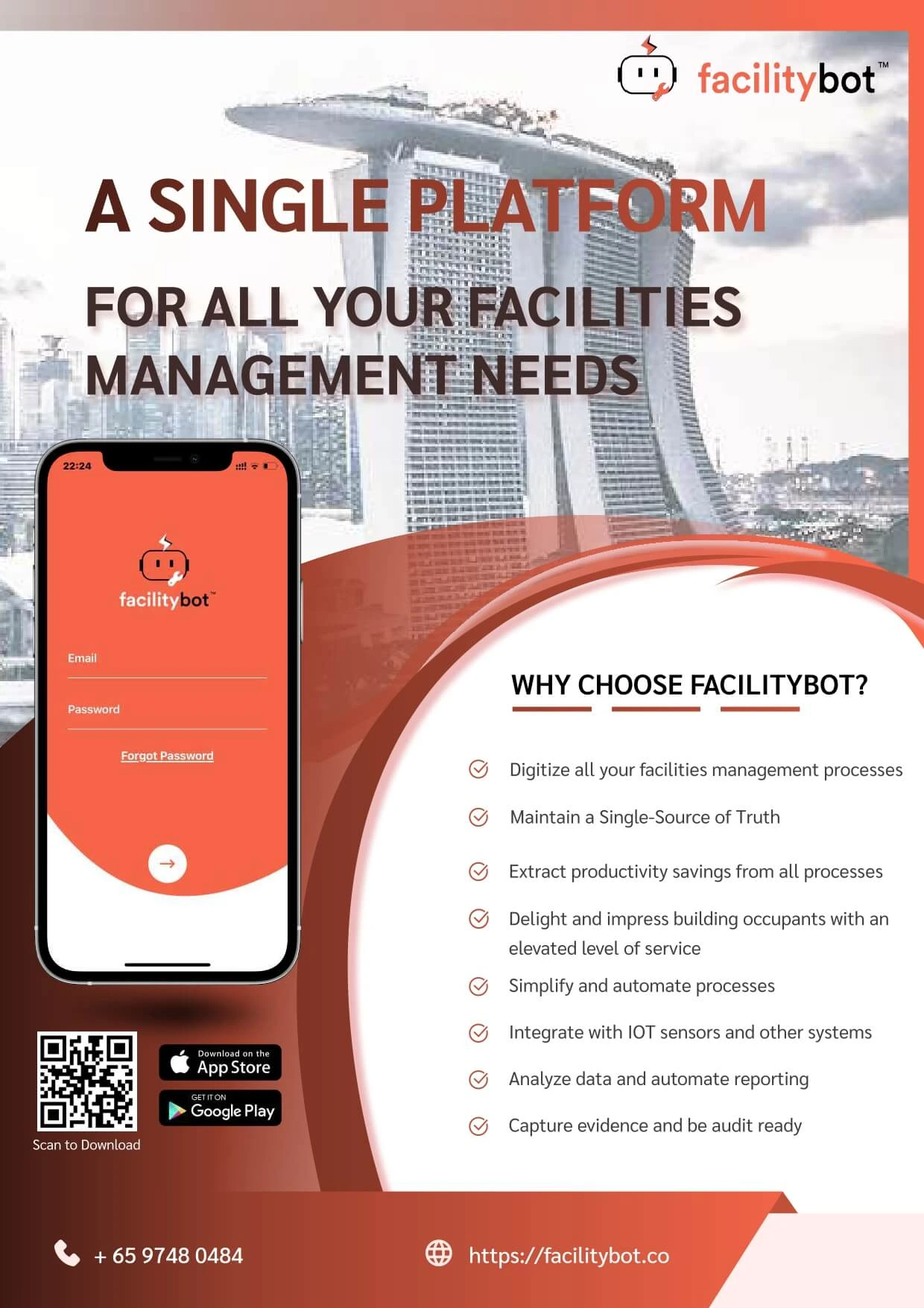As facility management becomes more complex, technology continues to play a key role in improving efficiency, accuracy, and responsiveness. Among the latest innovations reshaping the industry, computer vision — a branch of artificial intelligence that enables machines to “see” and interpret images — is revolutionizing how maintenance issues are detected, reported, and resolved.
From automated fault identification to real-time reporting, the integration of computer vision is one of the emerging benefits of AI facility management. It not only reduces manual effort but also improves service accuracy, safety, and tenant satisfaction.
Let’s explore how computer vision enhances fault reporting, why it’s becoming essential for modern facilities, and how solutions like FacilityBot are harnessing AI to streamline maintenance workflows.
Understanding Computer Vision in Facility Management
Computer vision allows systems to analyze visual data from cameras, images, and sensors to detect faults or anomalies automatically. By using AI algorithms, facilities can identify issues like leaks, cracks, obstructions, or equipment malfunctions without relying solely on human inspection.
When combined with AI facility management platforms, computer vision automates the fault reporting process — detecting, classifying, and assigning maintenance tasks instantly.
For example, an AI camera in a warehouse could automatically flag a leaking pipe or broken light, send an alert through facility management software, and create a maintenance ticket. This seamless integration significantly reduces response time and operational disruption.
The Role of Computer Vision in Fault Reporting
Fault reporting has traditionally relied on manual methods — tenants submitting complaints, technicians conducting inspections, or facility managers identifying visible issues. This process often leads to delays, incomplete data, and miscommunication.

With computer vision, these challenges are eliminated. Cameras and sensors continuously monitor facilities, capturing and analyzing real-time visuals. Once an anomaly is detected, AI algorithms verify it and trigger an automated work order.
This approach exemplifies one of the major benefits of AI facility management — converting reactive maintenance into proactive problem-solving.
How Computer Vision Enhances Fault Reporting
1. Automated Detection of Maintenance Issues
Computer vision systems can automatically detect visible problems such as:
- Water leaks or stains on ceilings
- Cracked tiles or damaged surfaces
- Blocked corridors or fire exits
- Equipment overheating or vibration anomalies
This automation eliminates the dependency on manual observation, ensuring that issues are identified 24/7 — even when facility staff are off-site.
2. Faster and More Accurate Reporting
When a fault is detected, computer vision instantly sends visual evidence to the facility management platform. Instead of vague descriptions, technicians receive photos or video clips that clearly show the issue.
This improves diagnosis, minimizes back-and-forth communication, and speeds up the repair process — one of the key benefits of AI facility management that directly impacts operational efficiency.
3. Seamless Integration with Facility Management Software
AI-powered platforms like FacilityBot integrate computer vision with their maintenance management systems. When an issue is identified, the AI automatically generates a work order, assigns it to the appropriate technician, and notifies the tenant or manager.
FacilityBot’s system can also track progress, record resolutions, and provide performance analytics — ensuring that every detected fault is addressed quickly and effectively.
By combining automation with data intelligence, FacilityBot reduces human error, improves accountability, and helps facilities operate with higher efficiency.
4. Proactive Maintenance Through Pattern Recognition
Beyond simple detection, computer vision can recognize maintenance patterns over time. For example, if multiple leaks are detected in the same area across several weeks, AI can flag potential structural issues or material degradation.

This predictive capability supports proactive maintenance, preventing costly repairs and extending asset life — a major benefit of AI facility management for enterprises with large property portfolios.
5. Enhanced Safety and Risk Management
In high-risk environments like manufacturing plants, hospitals, or airports, safety is paramount. Computer vision continuously monitors for safety violations — such as blocked exits, unauthorized personnel, or equipment overheating.
When a risk is detected, the system instantly alerts facility managers to take corrective action. This not only improves compliance but also ensures employee and tenant safety — aligning with corporate sustainability and ESG goals.
6. Visual Documentation and Compliance Reporting
AI-driven visual data provides undeniable proof of maintenance activity. Every fault captured and resolved is automatically documented with images, timestamps, and technician logs.
This helps facility managers maintain accurate records for audits, regulatory compliance, and performance evaluations. FacilityBot’s AI-driven dashboard simplifies reporting by compiling visual and operational data into easy-to-read summaries.
Real-World Example: FacilityBot and AI-Powered Fault Reporting
FacilityBot, an award-winning facility management software, has been pioneering the integration of AI and automation in maintenance workflows. Through messaging platforms like WhatsApp, Teams, and Slack, users can easily report faults — but with AI vision, FacilityBot takes it a step further.
Imagine a retail mall using FacilityBot:
- A ceiling-mounted camera detects a water leak near a food court.
- The AI system validates the issue using image recognition.
- FacilityBot automatically creates a fault ticket, assigns it to a technician, and alerts the building supervisor.
- Once fixed, the technician uploads a completion photo, closing the task.
This seamless, AI-driven workflow minimizes delays and improves tenant satisfaction — demonstrating the practical benefits of AI facility management in real-world scenarios.
7. Improved Tenant Experience and Transparency
Computer vision enhances tenant communication by adding visual clarity to fault reporting. Tenants can view images of detected issues and track their resolution in real time.
With FacilityBot’s AI chatbot, tenants can even interact with the system through familiar channels like WhatsApp, receiving instant updates and confirmations — no need for follow-up calls or emails.
This transparency strengthens trust, improves satisfaction, and promotes a data-backed culture of accountability.
8. Reduced Operational Costs
While implementing AI and computer vision requires an initial investment, the long-term cost savings are significant. Automation reduces manual inspections, administrative hours, and emergency repairs.
Enterprises can save up to 30–40% in maintenance costs by shifting from reactive to predictive operations. The integration of computer vision into facility management platforms like FacilityBot amplifies these savings through continuous optimization and reporting efficiency.
The Broader Benefits of AI Facility Management
Computer vision is just one part of the broader transformation brought by AI in facilities. Together with technologies like natural language processing, machine learning, and IoT integration, AI enables:
- Predictive maintenance and energy management
- Automated workflows and smart scheduling
- Data-driven decision-making
- Sustainable resource optimization
The benefits of AI facility management extend far beyond maintenance — they reshape how enterprises plan, operate, and evolve their built environments.
The Future of AI and Computer Vision in Facility Management
Looking ahead, the role of computer vision will continue to grow. Future innovations may include:
- AI drones for inspecting rooftops and large outdoor assets
- Thermal imaging cameras for detecting hidden faults
- 3D visual mapping for space planning and renovation tracking
- Edge computing integration for real-time fault detection without cloud dependency
As more organizations adopt AI-driven platforms like FacilityBot, facility management will become smarter, safer, and more sustainable — transforming how spaces are maintained and experienced.
Conclusion
Computer vision represents a major leap forward in how facilities identify and resolve maintenance issues. By automating fault detection, improving accuracy, and integrating seamlessly with software like FacilityBot, it exemplifies the many benefits of AI facility management — from efficiency and cost reduction to safety and tenant satisfaction.
As AI technology continues to advance, facility managers can expect a future where systems not only detect problems but also predict, prioritize, and resolve them automatically.
With platforms like FacilityBot leading this transformation, the future of fault reporting is not just digital — it’s intelligent.




